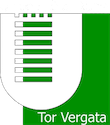Self-translators’ rewriting in freedom
Abstract
Despite the growing interest in self-translation among translation scholars, who increasingly view it as a phenomenon falling under their jurisdiction, the perception remains that self-translation is more a form of original writing than translation proper. This perception is corroborated by a number of authors-translators who are resistant to call translations the second versions of their works in another language by virtue of the greater liberty at their disposal when translating their own texts. The aim of this article is to reflect upon this apparent contradiction through the theoretical and methodological tools offered by translation studies. Firstly, self-translators’ “method of translation in freedom” is set against the liberties that “normal” translators have traditionally taken and continue to take with their source texts, as emerged from the creative turn in translation studies, which has shown, for example, that translators increasingly claim ownership of their translations. Then, the potential of applying the methodologies used in corpus-based translation studies to self-translated texts is explored by comparing self-translations with “standard” translations – either translations of the same texts done by other translators or translations of the works of others done by the authors-translators themselves – with a view of determining whether self-translated texts display features that set them apart from normally translated texts.
Nonostante il crescente interesse per l’autotraduzione da parte degli studiosi di traduzione, che lo rivendicano sempre più come un ambito di loro competenza, rimane l’impressione che l’autotraduzione rappresenti più una forma di scrittura originale che di traduzione vera e propria. Quest’impressione è rafforzata da numerosi autori-traduttori che mostrano resistenza a chiamare traduzioni le seconde versioni delle loro opere in un’altra lingua in virtù della maggiore libertà a loro disposizione quando si autotraducono. Scopo del presente articolo è quello di riflettere su questa apparente contraddizione attraverso gli strumenti teorici e metodologici offerti dagli studi sulla traduzione. Dapprima il “metodo di traduzione in libertà” degli autotraduttori è rapportato alle libertà che i “normali” traduttori si sono sempre presi, e continuano a prendersi, coi testi da tradurre, come emerge dalla svolta creativa degli studi sulla traduzione, che ha mostrato, tra l’altro, che i traduttori si ritengono sempre più proprietari delle loro traduzioni. Si esplorano poi le potenzialità delle metodologie usate nell’ambito degli studi sulla traduzione basati su corpora confrontando le autotraduzione con normali traduzioni – sia degli stessi testi ad opera di altri traduttori sia delle opere altrui da parte degli stessi autori-traduttori – nell’intento di determinare se i testi autotradotti possiedono caratteristiche che li differenziano dai testi tradotti normalmente.






